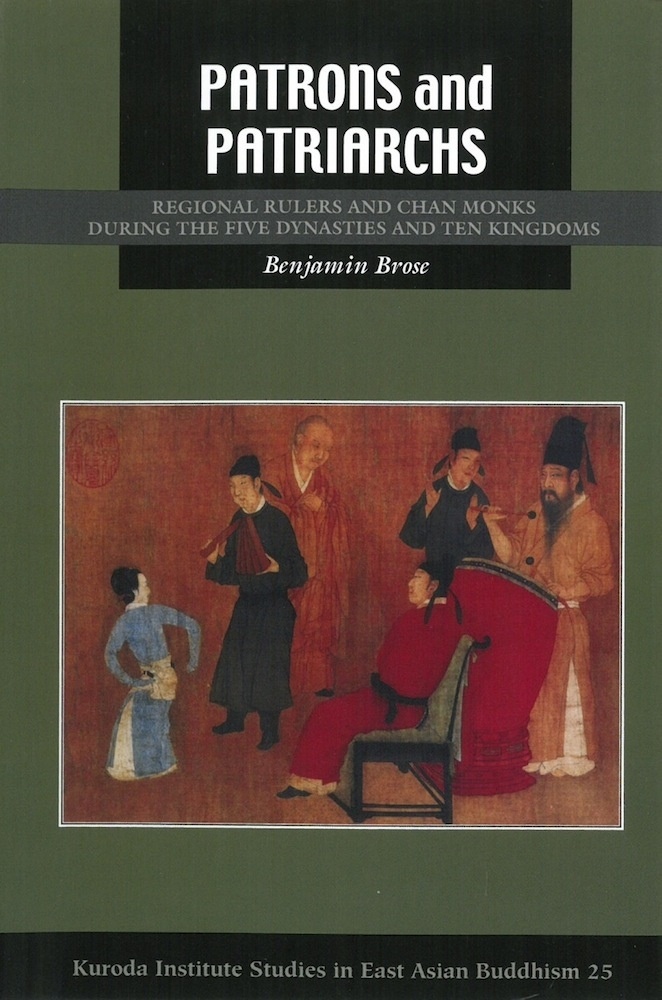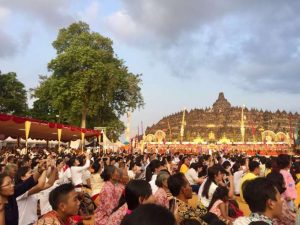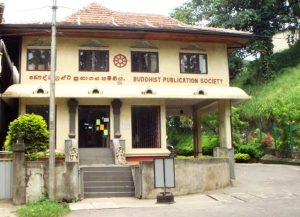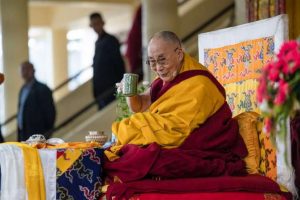Not all the most important moments in Chinese Buddhist history occurred during China’s most famous periods. The transformation of Chan, or Zen (imported by Bodhidharma from India in the 6th century), into a truly Chinese expression of Buddhism is one of these epochal, defining moments. However, we do not fully understand the emergence of Chan as a “Chinese” spiritual movement because it occurred during the Five Dynasties and Ten Kingdoms (c. 907–c. 960), a period so unpopular in Chinese Studies that many scholars (let’s call them “Sinology snobs”) dislike to be seen studying or teaching it.
Sinology snobs would much rather tell their academic circles they were immersed in “golden age” dynasties like the Han (206 BCE–220 CE), Tang (618–907), or Qing (1644–1912). The snobbishness is not intentional, but rather seeped into Sinology and Buddhist Studies after decades of scholarly privileging. We look back on the bad old days when classical historians favored the history of sedentary empires like Rome or Persia over that of the nomadic cultures, or emphasized the initiative of colonial powers over the reactions of colonized communities. This kind of privileging blinded us to how influential nomadic cultures actually were in the empires of Rome, Persia, or indeed China, or how the agency of the “colonized” defined the “colonizer” as much as the latter’s power over the former.
Sinologist snobbishness has “narrowed” our understanding of Chinese Buddhism: events we see as defining Buddhism generally appear to have occurred only during “big” dynasties. There are many reasons why Sinology snobs prefer to be associated with the big dynasties. The Han and Tang are seen as golden ages of Han Chinese civilization. The Song (960–1279) saw the rise of Neo-Confucianism with its pervasive legacy to Chinese society. The Qing, while technically ruled by a Manchu minority, bequeathed to modern China its national borders and was the first Chinese player in an international system of nation-states. We are conditioned to assume that some dynasties are more significant for the Chinese (more specifically, Han) story, and that the events that occurred during those periods are more significant than those that did not.
The “bridge” between the courtly Buddhism of the Tang era and that of fully Sinicized Song dynasty Chan remains a historical lacuna because the intermediary era of the Five Dynasties is seen as one of political disunity and infighting by uncouth southern warlords—it just does not seem as important or prestigious. This applies elsewhere: periods like the Northern Wei (386–534) and Tangut Xia (1038–1227) were ruled by minority dynasties seen to be of little consequence to the story of “Han unity.” Only recently has the Northern Wei been acknowledged as critical in the story of Buddhism in China, and also as influential in China’s history overall.
Of course, many events during “big name” periods are of real importance to Buddhism. The White Horse Temple, built during the Eastern Han period (25–220) in 68 CE, can be called the cradle of Chinese Buddhism, and tantric Buddhism was transmitted by Indian and Central Asian masters during the Tang. However, a narrative framed through a Tang-centric lens would have us believe that the diverse schools of Buddhism were annihilated after the end of the Tang, only for a completely new Buddhism to emerge by the Song as a Sinicized movement split between the “grassroots schools” of Chan and Pure Land—a leap of logic we now know to be full of historical holes.
Benjamin Brose’s Patrons and Patriarchs: Regional Rulers and Chan Monks during the Five Dynasties and Ten Kingdoms makes a start on building this much-needed bridge between the Tang and the Song. It is an insightful monograph covering the relationship between regional rulers and Chan monks during this era, offering a comprehensive, detailed analysis of the figures that Sinicized Chan Buddhism. Sophisticated in its breadth, it is packed with names, places, and dates that require careful digestion.
In Chapter 1, Brose examines how the elite clerical networks of the Tang capital Chang’an (today’s Xi’an) were absorbed by southern Chinese cities, especially Chengdu and Hangzhou, which propelled otherwise obscure Chan schools to political prominence in southern China. He therefore debunks the claim that the obliteration of the old Tang clerical and secular aristocracy meant that the courtly Buddhism of Chang’an was lost forever. The Chan that developed in the south from 742 to 1080 was in fact heavily inspired and influenced by the culture of Chang’an, and its masters quickly offered clerical services to the new political power structures in the south.
Brose was inspired by the research of several Japanese scholars, including Yanagida Seizan, Suzuki Tetsuo, and Kinugawa Kenji, who from the 1950s onward understood the significance of the Five Dynasties for Buddhism, thus much earlier than Western academics. Chinese scholars, as far back as the Song, scorned the founders of the southern kingdoms as “base commoners, unworthy of the power they had seized through insurrection” (p. 21). Brose’s overarching thesis is that the Sinicization of Chan owes a big debt to the lineages that became court allies to the southern kingdoms of Min, Southern Han, Southern Tang, and Wuyue. The key players in these dynasties and kingdoms are too many to list, but Brose covers them over the course of chapters 3 to 6.

Chapter 3 examines the most powerful monastic network in southern China, headquartered in the Min Kingdom, and the alliance between the monks Xuefeng Yicun (822–908) and Xuansha Shibei (835–908) and Min royals. Chapter 4 addresses how the Southern Tang absorbed monks fleeing the collapse of Min in the 930s and 940s and subsequently created its own culture of monastic support and royal patronage, particularly through Fayan Wenyi (885–958), who with seven of his heirs secured support of two of the kingdom’s ruling clans. Chapter 5 examines how developments in Wuyue led to the innovation of political patronage of monks based on lineage (with a royal and a clerical aristocracy running side by side).
Although each chapter highlights unique political, ideological, and clerical innovations for each faction, the theme is consistent throughout. Brose emphasizes that “place-based” patronage networks were often more important than the ideological battle between the schools of Chan: “This was a self-perpetuating system; the king and his courtiers established and supported a monastic leadership sympathetic to their interests while those clerics trained and, together with the court, advanced the next generation of monastic leaders” (p. 113). This means that the survival of Chan after the Tang collapse was a far cry from its common characterization as a “grassroots” movement hiding in the mountains. Rather, it is thanks to patronage during the Five Dynasties and Ten Kingdoms that it became a strong, state-supported institution.
Brose notes that the power of Chan institutions was somewhat vulnerable if they lost their patrons: “Of course, the symbiotic and reciprocal nature of samgha-state relations meant that the fortunes of Xuefeng Yicun’s and Xuansha Shibei’s descendants were bound up, for the better and for the worse, with those of the ruling families of Min, the Southern Han, the Southern Tang, and Wuyue. As these kingdoms self-destructed or submitted to the authority of the nascent Song dynasty, their religio-political networks either disintegrated or were dismantled” (p. 113). The eventual triumph of the Linji school of Chan in the corridors of the Song imperium was therefore not a matter of objective ideological superiority over the schools attached to the southern kingdoms, but one of outflanking its rivals’ “place-based” patronage networks.
Eventually, only through Song unification via the new capital of Kaifeng could Chan consolidate its presence in the hallways of centralized Chinese power. Brose devotes the entirety of Chapter 6 to this reintegration with the new dynasty. This is the period we are more familiar with. By the beginning of the Northern Song (960–1127), to practice under lineages like the Linji was to work with powerful and wealthy lay and imperial benefactors at state-supported monasteries in prestigious cities like Kaifeng.
The Buddhist developments during the Five Dynasties and Ten Kingdoms will never receive as many accolades as the Buddhist movers and shakers during the “prestigious” periods, or even during “minority dynasties” like the Yuan (1279–1368) or Qing. Brose’s book is a timely reminder that we need many more books on Buddhism in the less studied periods. One day, perhaps even Sinology snobs will enjoy studying them.
Patrons and Patriarchs: Regional Rulers and Chan Monks during the Five Dynasties and Ten Kingdoms was published by University of Hawaii Press, Honolulu, in 2015.













